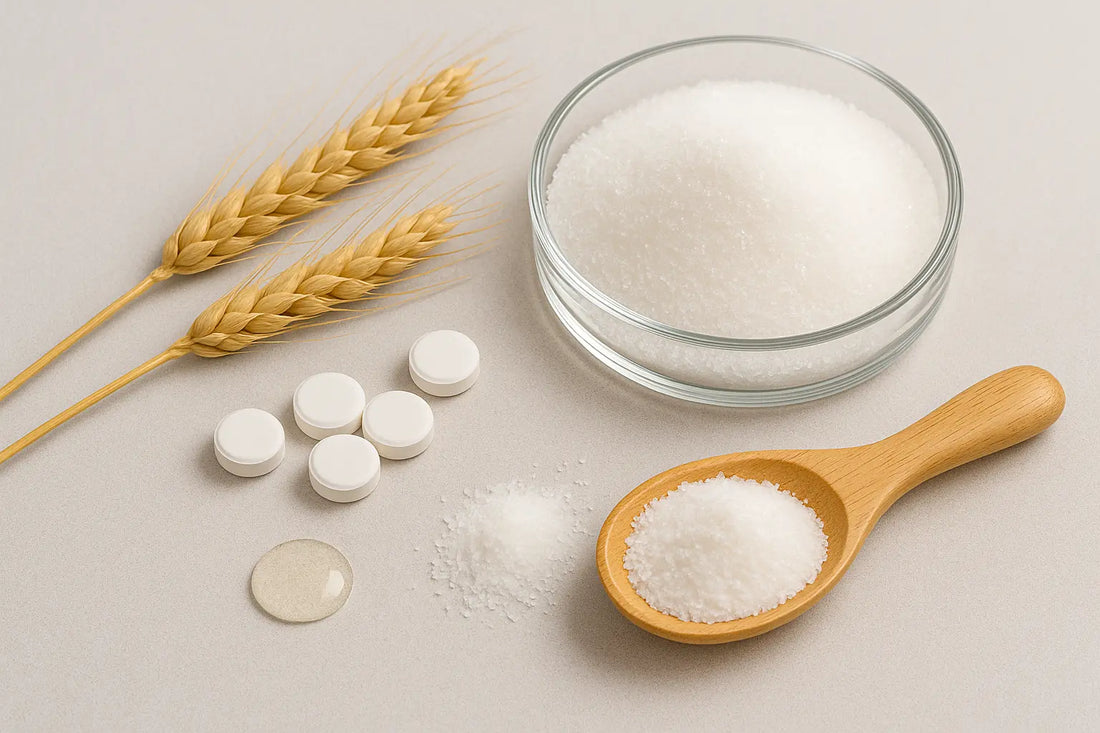
Maltitol: Low-Sugar Sweetness, GI, Safety & Where It Appears
1) What is Maltitol?
Maltitol is a sugar alcohol (polyol) used to replace sugar while keeping sweetness and texture in snacks and bars. It offers a similar taste to sucrose with fewer calories and a lower glycaemic impact, making “no-added-sugar” and reduced-sugar recipes taste closer to the real thing. In EU/US contexts, maltitol is typically labelled at ~2.1–2.4 kcal/g (versus sugar at 4 kcal/g).
In Australia/New Zealand labelling, FSANZ assigns maltitol an energy factor of 12 kJ/g (≈ 2.87 kcal/g). Different regions use different factors, but the takeaway is the same: fewer calories than sugar.
2) Clinically Demonstrated Benefits
2.1 Lower glycaemic response
Maltitol has a low GI compared with sucrose, helping reduce post-meal spikes when it replaces sugar in foods.
2.2 Tooth-friendly
Polyols like maltitol are non-cariogenic (not fermented by oral bacteria the way sugar is), making them friendlier for teeth in sugar-reduced products.
2.3 Sugar-like functionality
Unlike many alternative sweeteners, maltitol provides bulk and texture similar to sugar—useful in chocolate coatings and bars where mouthfeel matters.
3) Optimal Dosage & Timing
There’s no “timing”—maltitol is built into the product. For everyday consumers, what matters is tolerance: like other polyols, larger single doses can cause GI discomfort (bloating, loose stools). Reviews note symptoms generally at higher intakes, which is why portion guidance exists. Start with a single serve, see how you feel, and avoid stacking multiple polyol-sweetened foods at once.
4) Safety & Side Effects
Regulators recognise maltitol as suitable for use in foods, with region-specific energy factors and labelling rules. It’s widely used to cut sugar and calories while preserving taste. The main caveat is digestive tolerance at high intakes—typical of many sugar alcohols. If you’re sensitive to polyols, keep to the serving suggestions and space out consumption.
5) Which Maxine’s Burn products contain Maltitol?
- Burn Bars: High-protein, low-sugar bars for on-the-go energy—great taste with no-added-sugar chocolate options.
- Burn Cookies: Soft-baked protein cookies—low sugar, satisfying bite, perfect between-meal snack.
-
Burn Protein: Everyday whey protein for lean recovery—smooth-mixing, tasty flavours, easy daily shake.
- Burn Dessert Mousse: Creamy high-protein dessert mix—whips into a guilt-free mousse for a post-dinner treat.
6) Related Ingredients (often paired with Maltitol in bars)
- Glycerine – helps softness and moisture retention.
- Inulin – add fibre and support reduced-sugar textures.
-
Soy Lecithin – emulsifier for smooth chocolate coatings.
